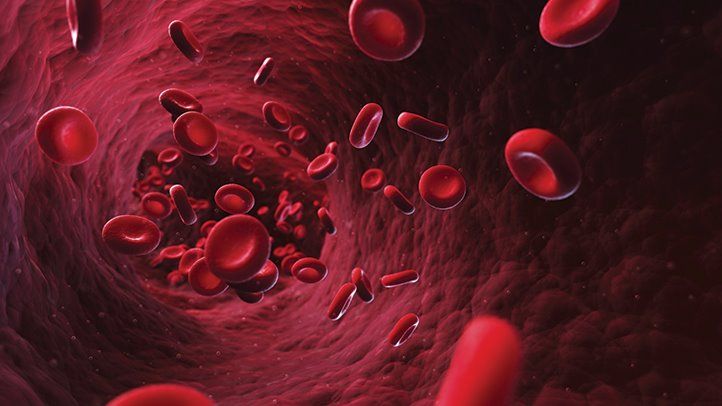Got Iron?
Anemia is one of the most common disorders in the world, and its complexities affect students and adults in different ways.
photo courtesy of Everyday Health Magazine
Anemia is a disorder in which the body cannot produce enough healthy red blood cells, often leading to fatigue.
With over a seventh of the world’s population struggling with iron deficiency, one would think that anemia would be a topic covered more frequently in health classes and in general. As it affects 1.62 billion people worldwide, anemia impacts more people than the flu does each year.
Anemia is a blood condition in which one’s body does not produce enough red blood cells necessary to function properly. Many people closely associate iron deficiencies with anemia, but although it is the most prevalent form of anemia worldwide, it is not the only one.
There are five different types of anemia: aplastic anemia, iron deficiency anemia, sickle cell anemia, thalassemia, and vitamin deficiency anemia.
Aplastic anemia is a condition in which the body stops producing red blood cells completely. It leads to fatigue as well as uncontrollable bleeding. It is very rare and serious and is largely incurable.
Most people’s red blood cells are shaped like discs, but for individuals with sickle cell anemia, their cells are shaped like crescents, or a sickle, as the disorder’s name indicates. The sticky, crescent-like shape of the cells causes a slower movement of circular blood cells to move through the body, resulting in a lack of oxygen to the body and even blockage in blood vessels.
The lack of hemoglobin, which allows oxygen to be transported to the cells, is a form of anemia called thalassemia. The typical case of thalassemia does not require much treatment, but in extreme cases, a blood transfusion can be required.
Some people lack Vitamin C and Vitamin B-12 in their blood, a condition called vitamin anemia. Usually, with vitamin supplements, vitamin anemia can be fixed or somewhat improved.
Iron deficiency is the most common form of anemia. As the name suggests, it occurs when the body lacks sufficient iron. The body cannot produce enough healthy red blood cells, and therefore, oxygen to the body is cut off. Oftentimes, this leads to shortness of breath and moderate to extreme fatigue.
Statistically, women who are pregnant have one of the highest risks of developing anemia, as 41.8% of women carrying children have the condition. During the last trimester of pregnancy, the fetus utilizes its mother’s iron stores located in her bone marrow, causing the mother to often run low on her own iron and leading to iron deficiency anemia. Iron deficiency anemia during pregnancy can lead to having a baby who does not fully develop, or the baby can even be premature.
Anemia affects young adults, as well. According to a study done by the World Health Organization, 25.4% of school-age students have some kind of anemia.
A study conducted in 2001 analyzed the standardized test results of different students aged 6-16. Of 5,500 students, 3% of the studied population was iron-deficient. According to the study, teenage girls were the most likely to have an iron deficiency. Further, those with iron deficiency were more than twice as likely to have “below average math scores than those with normal iron levels.”
Here at NASH, iron deficiency anemia has a drastic effect on the lives of students, including juniors Rachel Hockenberry and Ryan Podnar , who are members of the Cross Country and Track Teams. Before their diagnoses, the first thing they both noticed was that their daily lives seemed different.
“When I was running, I started to hit a wall,” Hockenberry said. “One time, I fell asleep while I was eating. I was eating a snack, and I went to sleep, and I love eating!”
This is a common occurrence for those with iron deficiencies. Because of the lack of oxygen in the muscles, the heart has to work harder to make up for the hemoglobin that they do not have. Naturally, fatigue is a significant symptom of anemia.
Podnar experienced his fatigue on a more muscular level.
“I felt off,” he said. “It was my hamstrings, for the most part. They didn’t recover quickly.”
Hockenberry had a similar experience.
“I felt really sore in my calves,” she recalled. “We thought it was my spikes.”
Other symptoms of iron deficiency include paleness of the skin, weak or brittle nails, and oddly enough, a craving for non-edible substances like ice, dirt, mint flavoring, and laundry detergent.
“I always wanted ice,” Hockenberry said. “I wanted to chew it.”
Navigating an iron deficiency as a student-athlete is a whole endeavor on its own.
Hockenberry experienced an injury before her iron deficiency had begun, which led to confusion about what her prognosis could have been.
“We thought that I was really out of shape, then when the season progressed, we got a blood test,” she said.
This is a common sentiment among athletes struggling with iron deficiencies.
“I could barely do the training we were doing,” Podnar said.
For some athletes, conditions like anemia can be brought on by dietary issues, such as eating too many whole grains.
“I think it was 100% dietary for me,” Podnar said. “I’m usually pretty good about what I eat. It turns out that lots of whole grains prevent iron absorption, which surprised me.”
On the bright side, iron deficiency anemia is easy to fix for the most part.
“I take over-the-counter medication every night,” Hockenberry explained.
She said that since she began taking iron medication, her conditioned has improved, and she is back to where she usually is.
Podnar also found success in his fight against his condition.
“I feel better than I did. I think I’m pretty much back to normal,” he said.
For those on the fence about taking iron supplements, or for those who suspect that something just isn’t right about their metabolism, the best approach is to talk with your doctor first and see if you can be tested for a deficiency.

Claire Majerac is a senior at NASH and is excited to be working as the Opinions Editor for The Uproar. She enjoys reading, trying new breakfast recipes in her kitchen, and making pros and cons lists with Michelle Hwang.



